PART I
MATHEMATICAL REVIEW
CHAPTER 1
METHODS OF PROOF AND SOME NOTATION
1.1 Methods of Proof
1.2 Notation
EXERCISES
CHAPTER 2
VECTOR SPACES AND MATRICES
2.1 Vector and Matrix
2.2 Rank of a Matrix
2.3 Linear Equations
2.4 Inner Products and Norms
EXERCISES
CHAPTER 3
TRANSFORMATIONS
3.1 Linear Transformations
3.2 Eigenvalues and Eigenvectors
3.3 Orthogonal Projections
3.4 Quadratic Forms
3.5 Matrix Norms
EXERCISES
Chapter 4
CONCEPTS FROM GEOMETRY
4.1 Line Segments
4.2 Hyperplanes and Linear Varieties
4.3 Convex Sets
4.4 Neighborhoods
4.5 Polytopes and Polyhedra
EXERCISES
CHAPTER 5
ELEMENTS OF CALCULUS
5.1 Sequences and Limits
5.2 Differentiability
5.3 The Derivative Matrix
5.4 Differentiation Rules
5.5 Level Sets and Gradients
5.6 Taylor Series
EXERCISES
PART II
UNCONSTRAINED OPTIMIZATION
CHAPTER 6
BASICS OF SET-CONSTRAINED AND UNCONSTRAINED OPTIMIZATION
6.1 Introduction
6.2 Conditions for Local Minimizers
EXERCISES
CHAPTER 7
ONE-DIMENSIONAL SEARCH METHODS
7.1 Introduction
7.2 Golden Section Search
7.3 Fibonacci Method
7.4 Bisection Method
7.5 Newton’s Method
7.6 Secant Method
7.7 Bracketing
7.8 Line Search in Multidimensional Optimization
EXERCISES
CHAPTER 8
GRADIENT METHODS
8.1 Introduction
8.2 The Method of Steepest Descent
8.3 Analysis of Gradient Methods
Convergence
Convergence Rate
EXERCISES
CHAPTER 9
NEWTON’S METHOD
9.1 Introduction
9.2 Analysis of Newton’s Method
9.3 Levenberg-Marquardt Modification
9.4 Newton’s Method for Nonlinear Least Squares
EXERCISES
CHAPTER 10
CONJUGATE DIRECTION METHODS
10.1 Introduction
10.2 The Conjugate Direction Algorithm
10.3 The Conjugate Gradient Algorithm
10.4 The Conjugate Gradient Algorithm for Nonquadratic Problems
EXERCISES
CHAPTER 11
QUASI-NEWTON METHODS
11.1 Introduction
11.2 Approximating the Inverse Hessian
11.3 The Rank One Correction Formula
11.4 The DFP Algorithm
11.5 The BFGS Algorithm
EXERCISES
CHAPTER 12
SOLVING LINEAR EQUATIONS
12.1 Least-Squares Analysis
12.2 The Recursive Least-Squares Algorithm
12.3 Solution to a Linear Equation with Minimum Norm
12.4 Kaczmarz’s Algorithm
12.5 Solving Linear Equations in General
EXERCISES
CHAPTER 13
UNCONSTRAINED OPTIMIZATION AND NEURAL NETWORKS
13.1 Introduction
13.2 Single-Neuron Training
13.3 The Backpropagation Algorithm
EXERCISES
CHAPTER 14
GLOBAL SEARCH ALGORITHMS
14.1 Introduction
14.2 The Nelder-Mead Simplex Algorithm
14.3 Simulated Annealing
Randomized Search
Simulated Annealing Algorithm
14.4 Particle Swarm Optimization
Basic PSO Algorithm
Variations
14.5 Genetic Algorithms
Basic Description
Analysis of Genetic Algorithms
Real-Number Genetic Algorithms
EXERCISES
PART III
LINEAR PROGRAMMING
CHAPTER 15
INTRODUCTION TO LINEAR PROGRAMMING
15.1 Brief History of Linear Programming
15.2 Simple Examples of Linear Programs
15.3 Two-Dimensional Linear Programs
15.4 Convex Polyhedra and Linear Programming
15.5 Standard Form Linear Programs
15.6 Basic Solutions
15.7 Properties of Basic Solutions
15.8 Geometric View of Linear Programs
EXERCISES
CHAPTER 16
SIMPLEX METHOD
16.1 Solving Linear Equations Using Row Operations
16.2 The Canonical Augmented Matrix
16.3 Updating the Augmented Matrix
16.4 The Simplex Algorithm
16.5 Matrix Form of the Simplex Method
16.6 Two-Phase Simplex Method
16.7 Revised Simplex Method
Revised Simplex Method
EXERCISES
CHAPTER 17
DUALITY
17.1 Dual Linear Programs
17.2 Properties of Dual Problems
EXERCISES
CHAPTER 18
NONSIMPLEX METHODS
18.1 Introduction
18.2 Khachiyan’s Method
18.3 Affine Scaling Method
Basic Algorithm
Two-Phase Method
18.4 Karmarkar’s Method
Basic Ideas
Karmarkar’s Canonical Form
Karmarkar’s Restricted Problem
From General Form to Karmarkar’s Canonical Form
The Algorithm
EXERCISES
CHAPTER 19
INTEGER LINEAR PROGRAMMING
19.1 Introduction
19.2 Unimodular Matrices
19.3 The Gomory Cutting-Plane Method
EXERCISES
PART IV NONLINEAR CONSTRAINED OPTIMIZATION
CHAPTER 20 PROBLEMS WITH EQUALITY CONSTRAINTS
20.1 Introduction
20.2 Problem Formulation
20.3 Tangent and Normal Spaces
20.4 Lagrange Condition
20.5 Second-Order Conditions
20.6 Minimizing Quadratics Subject to Linear Constraints
EXERCISES
CHAPTER 21 PROBLEMS WITH INEQUALITY CONSTRAINTS
21.1 Karush-Kuhn-Tucker Condition
21.2 Second-Order Conditions
EXERCISES
CHAPTER 22 CONVEX OPTIMIZATION PROBLEMS
22.1 Introduction
22.2 Convex Functions
22.3 Convex Optimization Problems
22.4 Semidefinite Programming
Linear Matrix Inequalities and Their Properties
LMI Solvers
Finding a Feasible Solution Under LMI Constraints
EXERCISES
CHAPTER 23 ALGORITHMS FOR CONSTRAINED OPTIMIZATION
23.1 Introduction
23.2 Projections
23.3 Projected Gradient Methods with Linear Constraints
23.4 Lagrangian Algorithms
Lagrangian Algorithm for Equality Constraints
Lagrangian Algorithm for Inequality Constraints
23.5 Penalty Methods
EXERCISES
CHAPTER 24 MULTIOBJECTIVE OPTIMIZATION
24.1 Introduction
24.2 Pareto Solutions
24.3 Computing the Pareto Front
24.4 From Multiobjective to Single-Objective Optimization
24.5 Uncertain Linear Programming Problems
Uncertain Constraints
Uncertain Objective Function Coefficients
Uncertain Constraint Coefficients
General Uncertainties
EXERCISES
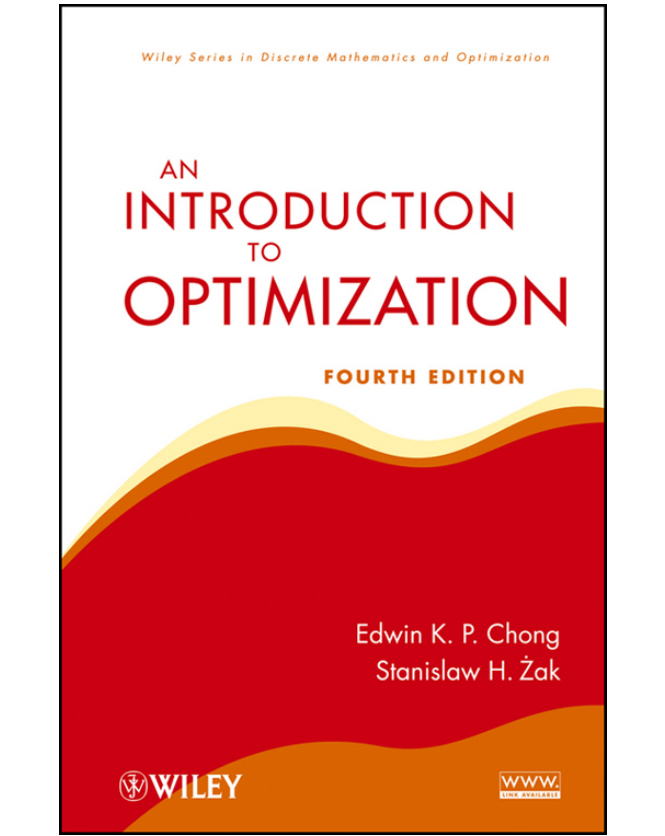
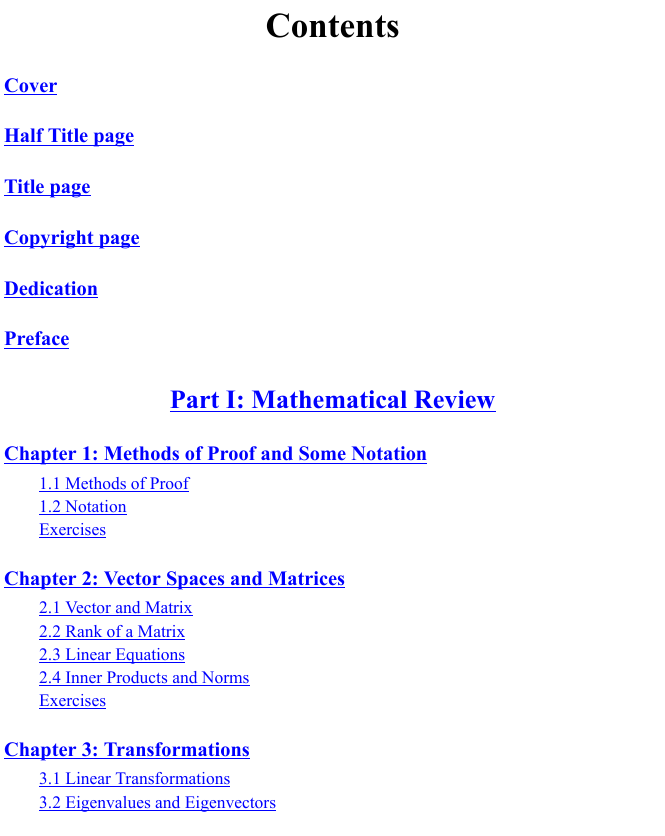
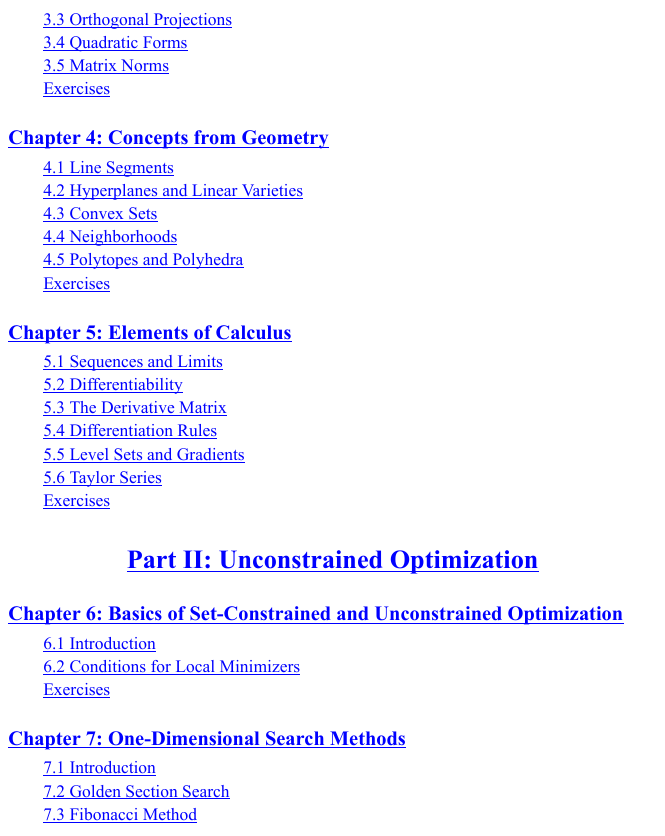

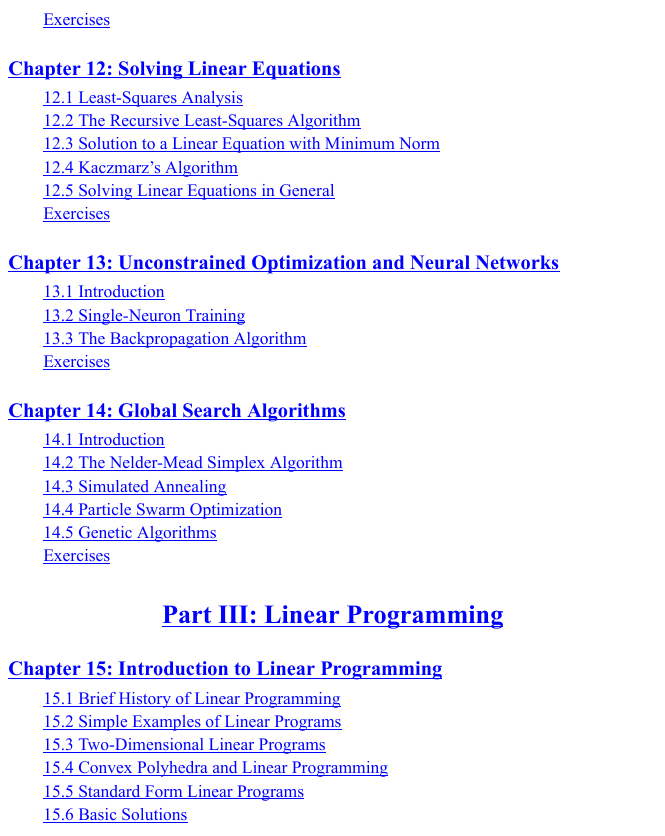
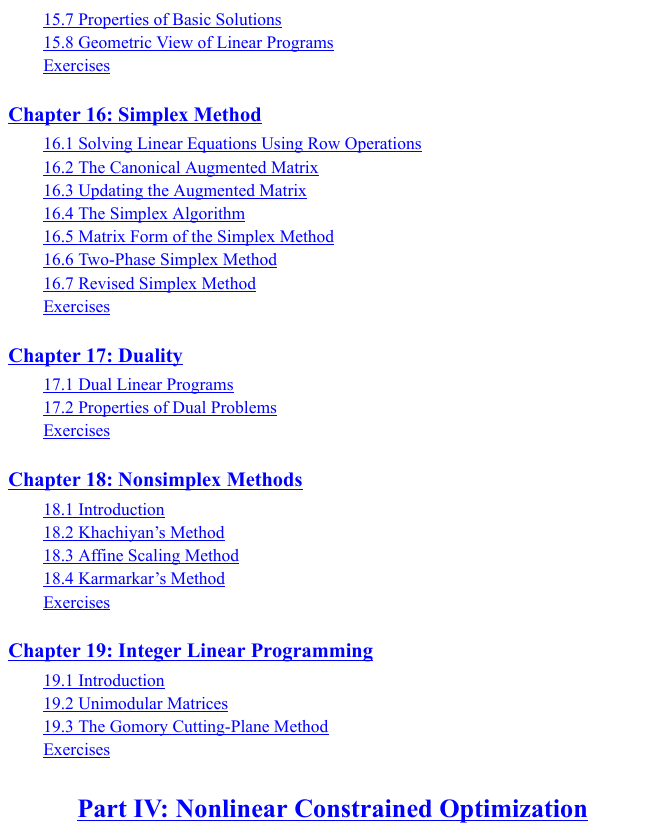
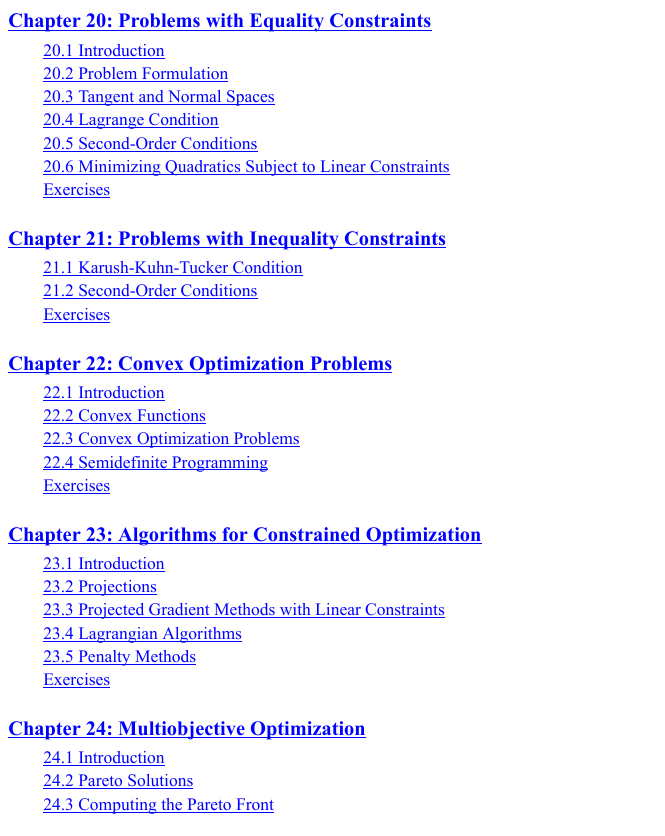
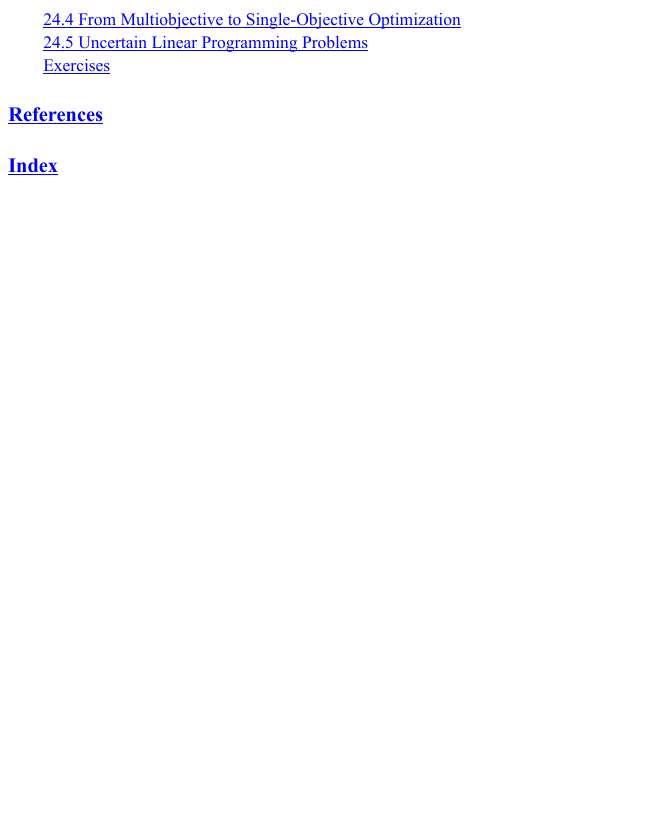








 2023年江西萍乡中考道德与法治真题及答案.doc
2023年江西萍乡中考道德与法治真题及答案.doc 2012年重庆南川中考生物真题及答案.doc
2012年重庆南川中考生物真题及答案.doc 2013年江西师范大学地理学综合及文艺理论基础考研真题.doc
2013年江西师范大学地理学综合及文艺理论基础考研真题.doc 2020年四川甘孜小升初语文真题及答案I卷.doc
2020年四川甘孜小升初语文真题及答案I卷.doc 2020年注册岩土工程师专业基础考试真题及答案.doc
2020年注册岩土工程师专业基础考试真题及答案.doc 2023-2024学年福建省厦门市九年级上学期数学月考试题及答案.doc
2023-2024学年福建省厦门市九年级上学期数学月考试题及答案.doc 2021-2022学年辽宁省沈阳市大东区九年级上学期语文期末试题及答案.doc
2021-2022学年辽宁省沈阳市大东区九年级上学期语文期末试题及答案.doc 2022-2023学年北京东城区初三第一学期物理期末试卷及答案.doc
2022-2023学年北京东城区初三第一学期物理期末试卷及答案.doc 2018上半年江西教师资格初中地理学科知识与教学能力真题及答案.doc
2018上半年江西教师资格初中地理学科知识与教学能力真题及答案.doc 2012年河北国家公务员申论考试真题及答案-省级.doc
2012年河北国家公务员申论考试真题及答案-省级.doc 2020-2021学年江苏省扬州市江都区邵樊片九年级上学期数学第一次质量检测试题及答案.doc
2020-2021学年江苏省扬州市江都区邵樊片九年级上学期数学第一次质量检测试题及答案.doc 2022下半年黑龙江教师资格证中学综合素质真题及答案.doc
2022下半年黑龙江教师资格证中学综合素质真题及答案.doc